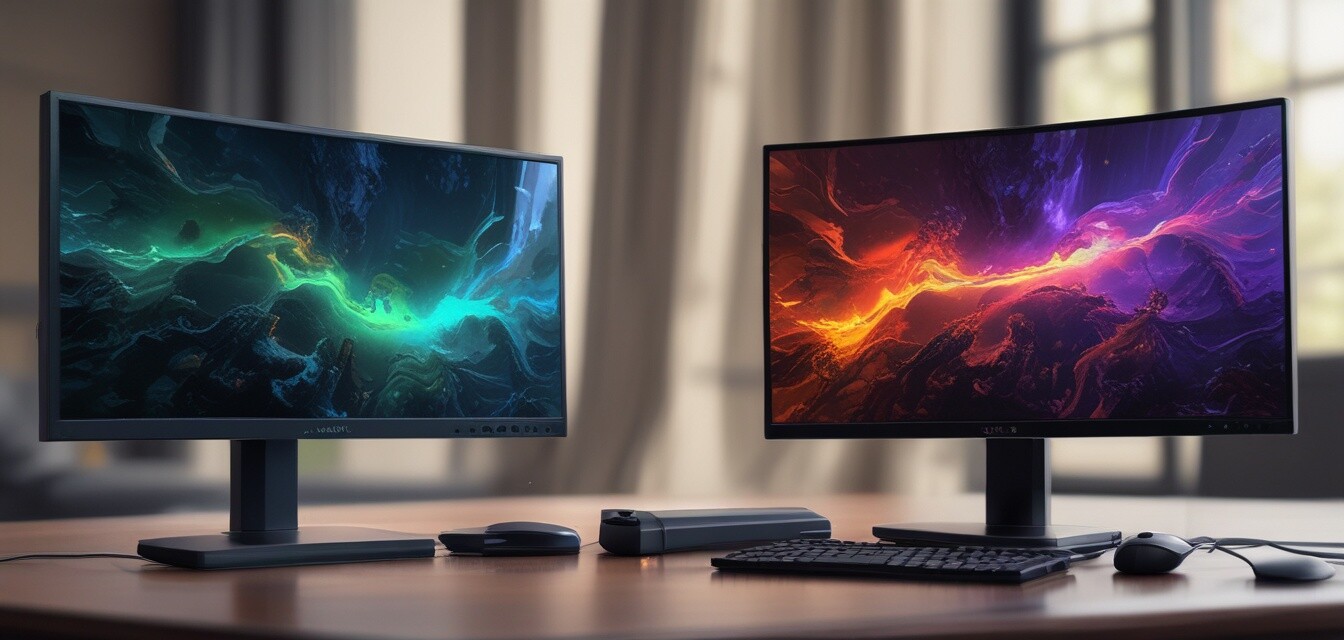
Comparing OLED and VA Panels for Gaming Performance
Key Takeaways
- OLED panels offer superior color accuracy and better contrast ratios.
- VA panels typically provide deeper blacks and are better for dark room settings.
- Response times and input lag can significantly impact gaming experiences, especially in fast-paced games.
- Both panel types have their merits; your choice depends on gaming preferences and environment.
When it comes to gaming, the choice of monitor technology can greatly impact your overall experience. Among the various panel technologies available, OLED (Organic Light Emitting Diodes) and VA (Vertical Alignment) panels are two of the most popular choices. Both have distinct characteristics that cater to different gaming preferences. In this article, we will compare OLED and VA panels, focusing on their suitability for gaming and how their features impact user experiences.
Understanding OLED Panels
OLED displays are known for their vibrant colors and deep blacks due to the self-emitting nature of their pixels. Each pixel in an OLED panel generates its light, allowing for precise control over brightness and color. Here’s a breakdown of the advantages and disadvantages of OLED panels:
Pros
- Superior color accuracy and range
- Incredible contrast ratios for deeper blacks
- Fast response times, ideal for fast-paced gaming
- Wide viewing angles, with no color shift
Cons
- Risk of burn-in with static images
- Generally higher price point
- Possibly lower brightness levels in bright environments
Performance Characteristics of OLED Panels
| Feature | Performance |
|---|---|
| Color Accuracy | Excellent, vibrant colors |
| Contrast Ratio | Perfect blacks, infinite contrast |
| Response Time | Low (1ms and less) |
| Viewing Angles | Wide, minimal distortion |
Understanding VA Panels
VA panels are recognized for their good performance in contrast and color representation. They use liquid crystals aligned vertically to block light from the backlight. Here's a detailed look at the benefits and drawbacks of VA panels:
Pros
- Excellent contrast ratios, good for dark scenes
- Better black levels compared to IPS panels
- Affordability, providing good value
- Good color reproduction typically
Cons
- Slower response times compared to OLED
- Narrower viewing angles than OLED
- Color shifting at extreme angles
Performance Characteristics of VA Panels
| Feature | Performance |
|---|---|
| Color Accuracy | Good, but not as vibrant as OLED |
| Contrast Ratio | High, deep blacks |
| Response Time | Moderate (4-5ms) |
| Viewing Angles | Limited, possible color distortion |
Side-by-Side Comparison of OLED and VA Panels
| Aspect | OLED | VA |
|---|---|---|
| Color Accuracy | Excellent | Good |
| Contrast Ratio | Infinite | High |
| Response Time | 1ms or lower | 4-5ms |
| Viewing Angles | Wide | Narrow |
| Price | Higher | Lower |
Which Panel is Best for Your Gaming Needs?
The decision between OLED and VA panels largely depends on what you value most in your gaming experience. If you’re looking for vibrant colors and the best performance in fast-paced games, OLED might be the better choice. However, if you prefer strong contrast and are on a budget, VA panels provide an excellent alternative.
For more information on how to choose the best monitor for your setup, check out our Buying Guides section.
Conclusion
When comparing OLED and VA panels for gaming, both technologies have their advantages and disadvantages. By understanding the performance characteristics and how they align with your gaming preferences, you can make an informed decision that will enhance your gaming experience.
To dive deeper into the latest trends in gaming monitors, don’t forget to visit our News and Trends page.